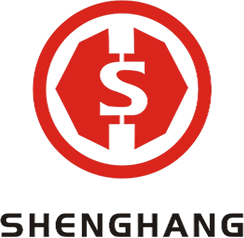

PVC waterproofing membrane, together with TPO and EPDM waterproofing membrane, constitute the main body of single-layer roof, which has been used to varying degrees in Europe, the United States, Japan and my country. In recent years, new progress has been made in PVC waterproofing membranes. No matter the variety and quality of products and the scope of application, they have been further expanded and improved, and they have also gained a deeper understanding of the controversial PVC environmental protection issues. The author analyzes some of the data collected, and has a new understanding and understanding of the achievements of PVC waterproofing membranes at home and abroad, and is now writing a document, hoping to help the rapid and healthy development of PVC single-layer roofing systems in my country.
It is worth pointing out that although the recent market share of PVC accounts for about 8% to 9%, the market share is not large, but the application volume is stable and basically unchanged. In recent years, the market share of TPO has grown rapidly, but the share gained mainly comes from EPDM, and the application of EPDM has been reduced accordingly, while the PVC waterproofing membrane, which is also a thermoplastic material, is not affected, showing that it is stable in single-layer roofs. occupy a certain position.
The waterproofing integrity of the PVC system is better than that of the TPO system over the entire life of the roof. Not all roofs can be drained smoothly, and water accumulation may occur on "absolutely level" roofs, so PVC is more appropriate.
Fire protection is a key criterion in roofing systems, and PVC sheets are inherently fire resistant and outperform other roofing systems in terms of flame spread. Although both PVC and TPO can reach the UL fire rating, the cost of the TPO system is higher than that of the PVC system when the same fire rating is achieved, and the TPO sheet will burn when subjected to the vertical fire test even if flame retardants are added. PVC sheet is soft, easier to install, and more suitable for colder climates; mechanically fixed PVC systems are easy to handle, with convenient seams and easy to make roof details (such as pipe sleeves and inner and outer corners) on site.
On the other hand, TPO may become hard in cold climates or when the thickness is large, making it difficult to work. Both systems can be thermally welded, but PVC remains weldable throughout its life, new membranes can be welded to old membranes at any time, and welding is effective in all weather conditions. During the welding process, PVC can judge the correctness of welding by observing the molten band overflowing along the seam, while TPO does not have this visual evidence in welding, resulting in inconsistent welding or missing welding.
PVC roofing membranes already have practices and plans for recycling at the end of their useful life, while TPO's recycling plans are far from being formed. PVC has a proven track record of over 40 years of successful use on all buildings in different climates around the world, proving that PVC's wide range of uses, superior quality and low life-cycle costs reassure owners and contractors; while TPO has a short history of use , the long-term function remains to be tested.
PVC waterproofing membrane is versatile and has a wide range of uses. PVC waterproofing membrane is widely used in various roofs, and has even been extended to metal roofing. In Japan, the amount of PVC coils has increased substantially, and many large-scale metal roofs in my country also use PVC coils. The PVC sheet is easy to be made into white color, and it is easy to be combined with flexible solar photovoltaic panels to form a photovoltaic roof to provide electricity and contribute to energy saving. PVC sheet has excellent root resistance, especially suitable for planting roofs, can be used for square floors and roofs, and has passed the most stringent root puncture resistance tests of German FLL and Swiss SIA280 related standards.
Factory pre-adhesive self-adhesive PVC sheet that provides zero VOC and smoke-free bonded roofing, a genuine green waterproofing material. PVC sheet, like butyl rubber sheet, has the key properties of low water absorption (2%) and low permeability, and is also particularly suitable for underground waterproofing. It has become the only thermoplastic material recommended for underground waterproofing in the United States, while CSPE (Chlorosulfonated polyethylene) and other plastic sheets are not suitable for underground waterproofing because of their high permeability and water absorption. PVC and TPO are two types of high-efficiency white reflective roofs. The cost of PVC roofing is higher than that of TPO. Owners who are interested in value and long life often prefer PVC roofing membranes, while owners who require shorter roofing lifespan are cheaper. If you are interested in products, you often end up choosing TPO roofing.
For a long time, PVC has a bad reputation for environmental protection, mainly due to the environmental problems that occurred in production more than 30 years ago, and even considered as a material that should be restricted, it has been scrutinized and criticized more than other materials, but recent research has The results are favorable for PVC. A recent report by the U.S. Green Building Council (USGBC) noted that, in general, PVC is as beneficial to health as other building products, and in some cases even the most environmentally friendly material.
The production process of PVC is strictly monitored by the US Environmental Protection Agency (EPA) and the Occupational Safety and Health Administration (OSHA). Over the past 25 years, PVC production has increased by more than 300%, but the amount of CO2 emissions into the environment has dropped by almost 80% over the same period. Most CO2 is produced when things such as wood, food, and garbage are burned, and the culprit is uncontrolled or incomplete combustion. EPA lists 16 sources of CO2, of which the incineration of municipal solid waste, the combustion of backyard waste and the combustion of housing wood all have a greater impact than PVC, and CO2 may also occur naturally.
Phthalates are used to make roofing membranes, including flexible PVC, and are FDA-approved for items such as blood sacs and blood vessels. More than 40 years of research and use have shown that phthalates have never harmed the human body when used as intended. A study by the Institute for Occupational Safety and Health (NIOSH) did not find hydrogen chloride produced during hot air welding to be harmful to health. Also, installing a mechanically fixed roofing system does not emit irritating fumes like adhesives or bituminous materials. All roofing systems have problems with by-products and residual waste, but from a life-cycle standpoint, PVC is the better, recyclable process from manufacturing to post-use. Also, manufacturing PVC roofing systems consumes less energy than other roofing systems.
PVC roofing membranes are inert and pose no danger to human health and the environment during use and disposal. Since the late 1980s, more than 26 life cycle assessment reports have been published for ethylene building products, many of which compared ethylene products to similar products made from other materials Greenhouse gas impact and product reliability are both good performers.
PVC is the only single-layer roofing membrane that has been shown to be recyclable after use. In Europe, AfdR is a major PVC membrane manufacturer, which has been recycling PVC membranes from old roofs for more than ten years. Through the European Synthetic Waterproofing Association (ESWA), they are implementing two more efficient processes for regenerating old roofing. During the recycling process, the recycled product is mixed with the virgin material to produce a new durable roofing membrane. In the United States, vinyl roofing membrane manufacturers have undertaken a program to regenerate old roofing at the end of the roof's life-cycle, and have regenerated more than 90,000 m2 of coils within two years of the program's verification phase. Beginning in 2008, this program will be greatly expanded .
PVC waterproofing membrane is one of the three major single-layer roofing materials. It occupies a dominant or important position in single-layer roofing. It has a broad development prospect and is worthy of vigorous development. According to new foreign research results, PVC waterproofing membrane is harmless to human body and the environment, and can be recycled. Some negative evaluations of PVC should be discarded and re-understanding that PVC is a good green waterproof material. PVC waterproofing membrane has a wide range of uses. In addition to being widely used on general flat roofs, it has achieved good results in underground waterproofing, metal roofing and planting roofs. It is the preferred material for photovoltaic roofing, which is conducive to energy saving. PVC waterproofing membrane is a thermoplastic material, and improving its thermal stability has become the key to the production of products.
The achievements of foreign countries in this regard are worth learning from. my country has a certain foundation in the development of PVC waterproofing membranes, but there is a big gap compared with foreign countries in terms of product quality and technology. It is necessary to improve standard indicators, develop enhanced products and energy-saving products, and solve increasing Greater efforts have been made to address plasticizer migration issues, control thermal stability, and expand product usage. Because of its characteristics, the PVC waterproofing membrane can be laid in a single layer on the roof, with superior performance and a service life higher than that of the double-layer modified asphalt membrane. The relevant national building codes should be revised accordingly to allow the single-layer use of PVC waterproofing membranes.
Shandong Shenghang Technology Co., Ltd. is located in Linyi City, Shandong Province. It is a famous manufacturing and logistics capital in China, with complete supporting industries and convenient logistics. It is one hour's drive from Rizhao Port and three hours' drive from Qingdao port. The air, land and sea transportation routes are smooth. Whether in China or abroad, it can choose the best path for customers and quickly deliver products to customers.
Factors to consider for the waterproofing membrane application
2022-03-09Excellent screw supplier
2022-03-03What is TPO waterproof membrane
2021-12-14
Tel: + 0086 15076176199 + 0086 311-87880324
No.3 Mingdu International Building,
Economic and Technological Development
Zone, Linyi
Shandong China
Shandong Shenghang TECHNOLOGY CO.,Ltd